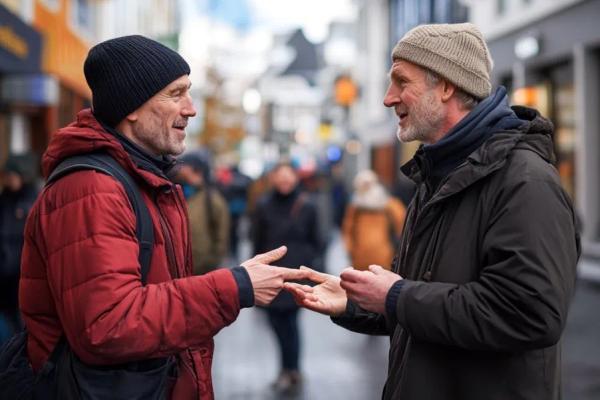
Being Polite in Iceland: How to Say "Please" in Icelandic
When you're picking up a new language, "please" is usually one of the first words you want to learn. It's a polite staple in so many tongues. But in Icelandic, things are a bit different. There's no direct translation for "please," but don't worry—Icelanders have their own ways of showing politeness. Let's explore how you can express courtesy in Icelandic.
What’s The Most Common Way to Say “Please” in Iceland?
Surprisingly, one of the most common ways to say "please" in Icelandic is to just use the English word. Thanks to exposure to English through media, tourism, and education, Icelanders often sprinkle "please" into everyday conversations. So whether you're ordering at a café or asking for directions, tossing in an English "please" feels totally natural and is widely accepted.
For example:
"Má ég fá vatn, please?"
Translation: Can I have water, please?
Since many Icelanders are fluent in English, using "please" won't make you stand out—in fact, it'll fit right into the flow of conversation.

The Icelandic Alternative: "Vinsamlegast"
If you want to keep your chat entirely in Icelandic, you can use "vinsamlegast" (pronounced “vin-saam-leh-gast”). This is the closest word to "please," though it more directly translates to "kindly" or "be so kind as to." You'll often see "vinsamlegast" on signs or hear it in more formal settings, like in customer service or official announcements.
Some examples:
"Vinsamlegast ekki reykja."
Translation: Please do not smoke.
"Vinsamlegast fylltu út þetta eyðublað."
Translation: Please fill out this form.
While "vinsamlegast" is handy in formal situations, it's not something you'd typically use when chatting with friends or making casual requests.
Being Polite Without "Please"
In Icelandic, politeness often comes through in your tone and how you phrase things rather than relying on a specific word. You can soften requests by using polite verbs or adding conditional phrases. Here are some go-to phrases to make your requests sound polite:
- "Gætirðu" (pronounced “gai-tir-thu”) means "Could you."
- "Værirðu til í að" (pronounced “vai-rir-thu til ee ath”) means "Would you be willing to."
For example:
"Gætirðu hjálpað mér?"
Translation: Could you help me?
"Værirðu til í að lána mér penna?"
Translation: Would you be willing to lend me a pen?
These phrases are polite even without a direct equivalent of "please," and they'll help you show courtesy in Icelandic.

Why is There No Word for "Please" in Icelandic?
The lack of a direct translation for "please" in Icelandic comes from the language's history and culture. Icelandic is one of the oldest living languages and has kept much of its original structure from the Viking Age. Politeness is often conveyed through grammar, tone, and respectful phrasing instead of a single polite word.
Culturally, Icelanders appreciate direct and straightforward communication. They're definitely polite, but there's less focus on adding extra words for politeness, especially in casual chats. This doesn't mean they're not courteous—they just express it differently.
Tips for Being Polite in Icelandic
- Use Polite Verbs: Phrases like “gætirðu” (could you) and “væri mögulegt” (would it be possible) can make your requests sound softer.
- Mind Your Tone: Sometimes, it's not what you say but how you say it. A friendly tone can go a long way.
- Watch and Learn: Pay attention to how locals phrase their requests and try to mimic their style.
- Keep It Simple: Icelandic values straightforwardness, so there's no need to use overly formal or complicated language.
Conclusion
Even though there's no traditional Icelandic word for “please,” it's still easy to be polite in Iceland. Whether you stick with the English "please," use "vinsamlegast," or rely on polite phrasing and tone, Icelanders will appreciate your effort. Embrace these cultural nuances, and you'll feel right at home exploring Iceland!

